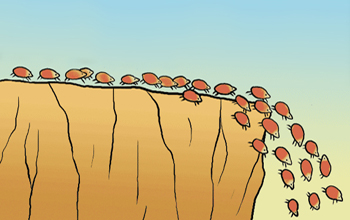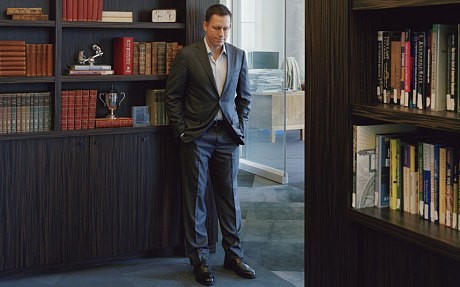The story about Cowtown and Grant Harris, as told in this week’s Yeti sponsored video, plays like a bedtime story. It grabs you by the emotional lapels at those first shots of galloping horses far below. And it never lets go.
Once upon a time and somehow, improbably, up to the present, the oldest rodeo in the United States just happens to be 7 miles from Exit 1 on the New Jersey Turnpike, or 20 odd miles southeast of Philadelphia as the crow flies. It launched in 1929 to attract bigger crowds to the Salem County Fair, and with a few fits and starts during the Depression and War years, is still going strong.
The self-described “Best Show on Dirt” runs every Saturday night from May to September. Its roster includes 7 separate events: bull riding, bareback riding, saddle bronc riding, steer wrestling, girl’s barrel racing, team roping and tie-down roping.

In saddle bronc riding, the cowboy holds on with one hand while keeping the other raised towards the heavens in the hope that he can stick to the saddle for the whole 8 seconds. A smooth, rhythmic ride is what scores the best. In girl’s barrel racing on the other hand, the prize goes to the fastest. Riders enter the arena at full speed, rounding each barrel in a cloverleaf pattern before galloping to the finish line. Timed to a hundreth of a second, the Cowtown tag for this event is “Nothin’ beats pretty girls and fast horses.”
All two hours come with non-stop commentary from the master of ceremonies (“Talk about closer than a coat of paint! Let’s put our hands together and appreciate a good ride!) and banjo playing by groups like Dave and the Wranglers, as reported by an erstwhile anthropologist writing for the Times.
Grant is fourth in a line of cowboys named Harris to run the Cowtown Rodeo. But while he was born to it, he grew to become a champion bull rider out West when his father decided to sell the place. The stamina and skills that win rodeos on a competitive circuit are far different from those it takes to run a business with rosters of weekly competitors, stalls full of livestock, a couple dozen employees, and a village of buildings sitting on hundreds of acres. Should he leave a job he was good at to become the CEO of a rodeo?
It was the first time that Harris had to grapple with his statement: “What we do is what we are. I don’t know how to do anything else.”

Harris not only returned to run the institution that his dad was leaving, he also had to adapt the Rodeo to changing customer tastes. When he got involved, Cowtown’s weekly competitions were seen on TV, but as Americans left its farms for its cities, Harris needed to keep the crowds coming. And succeed he did. First time visitors are always surprised at the length of the lines, the enthusiasm of the crowds, and how red-and-white signs for establishments like Russ’s Electric of Pennsville, Farmer’s Bank of Mullica Hill, Pole Tavern Equipment identify the regular viewing boxes that are filled with locals.
Today though, at 62, Harris faces another quandary. It’s about what will become of his life’s work. His daughters Courtney and Katy grew up in saddles right next to him. But they’re grown now, and as we learn from the clip, Courtney marries a cowboy and moves out West, while Katy stays closer to home, marrying an electrician named RJ. You can see how capable his wife Betsy is—what a working partner she’s been—but how are they going to carry on? Should they sell their land and business to developers when the interest on what a sale is likely to net would be more than the Cowtown Rodeo clears in a year?
Each Harris family member has to decide given how each has lived. Because what we’ve done and will continue to do is who we are.

After some bare knuckles truth telling—in the form of Harris counseling RJ that he and Katy “would have a difficult time growing together in their marriage” if he doesn’t get involved with the Rodeo’s operation—the family decides to stay put, with Katy and RJ continuing the tradition. Harris says that he needs no more money than he has already. But in the family members’ tear-filled eyes, there is a deeper calculus than that.
Nothing else we can imagine doing could ever bring us more.
Some of this story is about passing on a legacy. Who will care for the garden I’ve grown? Who will go on meeting the needs that my work has met? Who will fill my shoes and my reputation when I’m gone?
Some of this story is about furthering a legacy. How much is the work that you’re offering who I really am? Does my talent, skill, and experience “fit” this role, or would it be more fitting to do something else? What does my head say? My heart?
And finally, some of what Cowtown is about is good storytelling. Long before Yeti made videos like this one, it was selling coolers that people thought improved their status so much that they reportedly were stealing them out of one another’s boats and trucks. (Particularly in the South and Midwest, “if you’ve got Air Jordan or Lululemon money, but prefer to unwind by bass fishing and deer hunting, you can say it with a Yeti.”)
That was the first good story that Yeti told. But over time, the company also came to see videos like Cowtown as a way to connect with customers whose passions it shared. And it seems to be working. Since Cowtown (its latest) launched a couple of days ago, it has had 53,000 views on YouTube, which doesn’t include people like me who caught it in a social media feed.
Now I can’t wait to go and live part of this story too.







